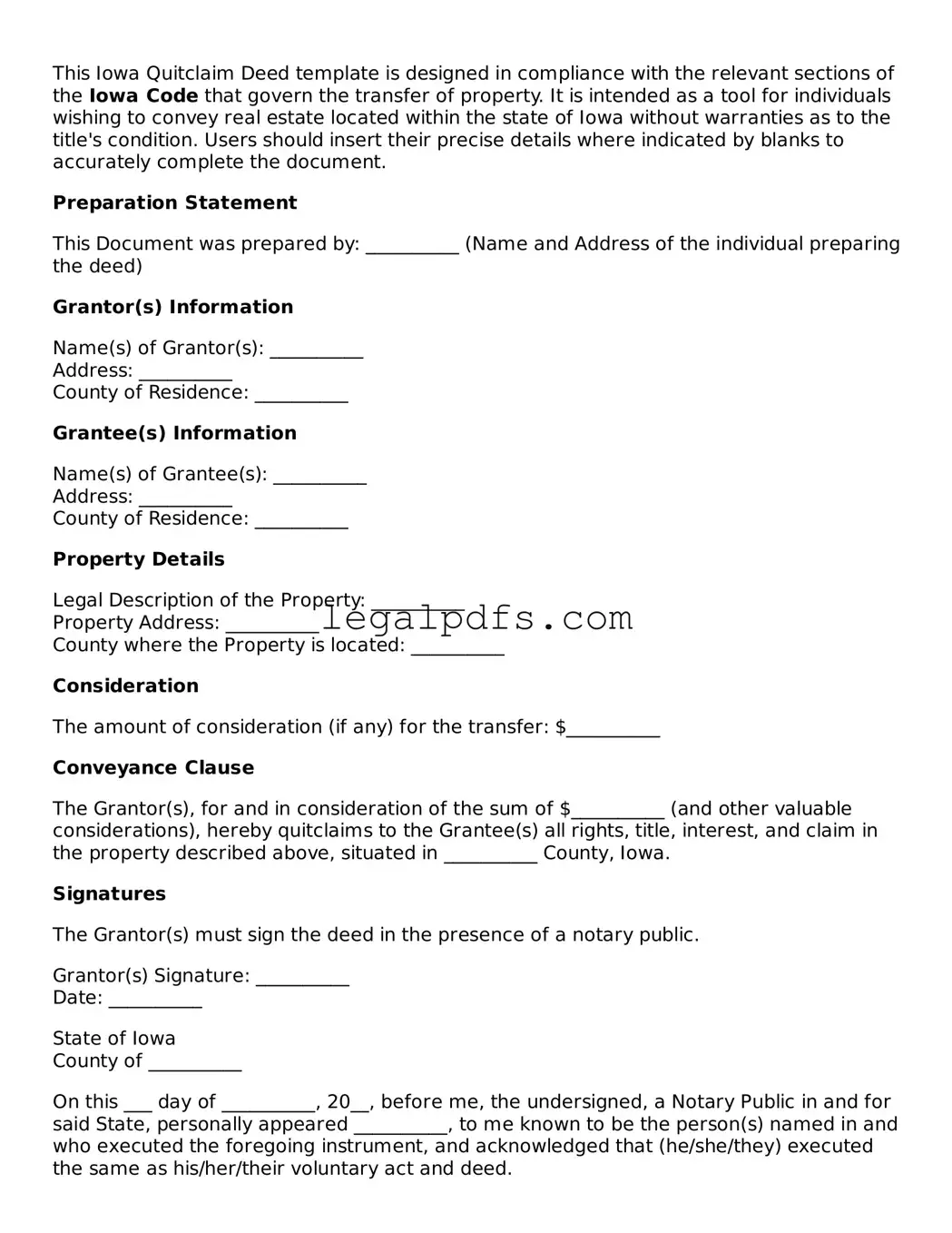This Iowa Quitclaim Deed template is designed in compliance with the relevant sections of the Iowa Code that govern the transfer of property. It is intended as a tool for individuals wishing to convey real estate located within the state of Iowa without warranties as to the title's condition. Users should insert their precise details where indicated by blanks to accurately complete the document.
Preparation Statement
This Document was prepared by: __________ (Name and Address of the individual preparing the deed)
Grantor(s) Information
Name(s) of Grantor(s): __________
Address: __________
County of Residence: __________
Grantee(s) Information
Name(s) of Grantee(s): __________
Address: __________
County of Residence: __________
Property Details
Legal Description of the Property: __________
Property Address: __________
County where the Property is located: __________
Consideration
The amount of consideration (if any) for the transfer: $__________
Conveyance Clause
The Grantor(s), for and in consideration of the sum of $__________ (and other valuable considerations), hereby quitclaims to the Grantee(s) all rights, title, interest, and claim in the property described above, situated in __________ County, Iowa.
Signatures
The Grantor(s) must sign the deed in the presence of a notary public.
Grantor(s) Signature: __________
Date: __________
State of Iowa
County of __________
On this ___ day of __________, 20__, before me, the undersigned, a Notary Public in and for said State, personally appeared __________, to me known to be the person(s) named in and who executed the foregoing instrument, and acknowledged that (he/she/they) executed the same as his/her/their voluntary act and deed.
Notary Public Signature: __________
My Commission Expires: __________
Instructions for Recording
After completion, this Quitclaim Deed must be filed with the Recorder's Office in the county where the property is located. Ensure that all local recording requirements, such as document formatting and applicable fees, are fulfilled.
